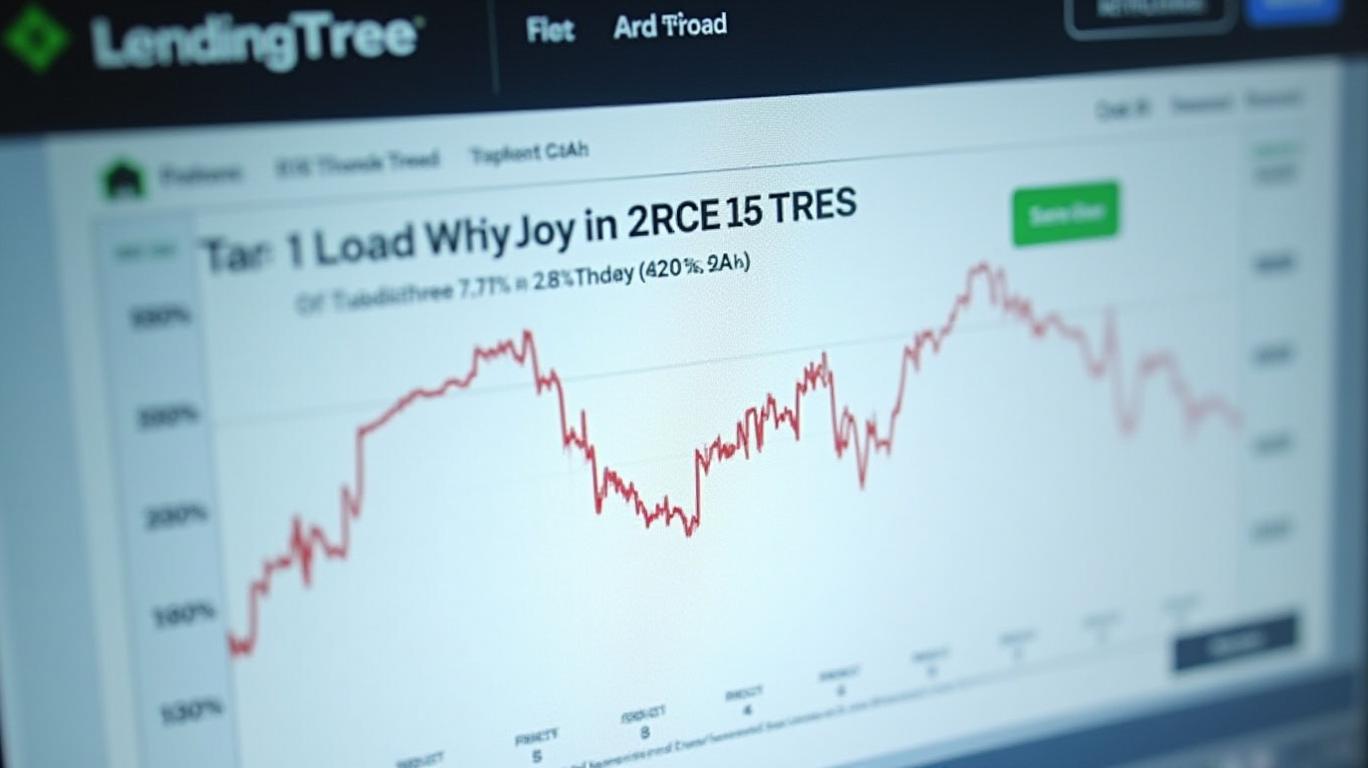LendingTree Faces Near-Term Headwinds Amid Regulatory and Macro Challenges
LendingTree (NASDAQ: TREE) shares plummeted 16% after hours following its Q1 2025 earnings report, which revealed a $8 million revenue shortfall against forecasts. While the company delivered a stunning earnings per share (EPS) beat—surpassing estimates by over 450%—the miss in top-line growth and a downward revision of full-year guidance underscored lingering challenges in its insurance segment and broader economic uncertainties. Yet, beneath the near-term turbulence, LendingTree’s diversified lending ecosystem and strategic investments hint at resilience.
The drop in TREE’s stock price to $45.50 (from a 52-week high of $62.49) reflects investor skepticism about its ability to sustain revenue growth amid regulatory headwinds. However, the company’s strong unit economics, particularly in high-margin segments like small business and home equity lending, paired with analyst optimism, suggest the pullback may present a buying opportunity for long-term investors.
Ask Aime: "Are LendingTree's stock price drops a sign of trouble?"
The Q1 Revenue Miss: A Storm in the Insurance Segment
LendingTree’s Q1 revenue totaled $239.7 million, missing the $247.74 million consensus. The shortfall stemmed from two key factors:
1. Regulatory Delays: The Federal Communications Commission’s (FCC) prior “one-to-one consent rule” disrupted customer acquisition processes in its insurance division. While the rule was rescinded in February 2024, lingering effects and a marketing correction by a major carrier slowed revenue growth.
2. One-Time Expenses: Legal fees and benefits-related costs added pressure to Q1 results.
Despite these hurdles, the insurance segment itself grew 71% year-over-year, driven by strong demand for home and auto policies. Management expects a rebound in H2 2025 as carriers adjust budgets and streamline operations.

Segment Breakdown: Strengths and Weaknesses
- Small Business Lending: Achieved record revenue growth, fueled by a Concierge sales team that boosted lender partnerships and renewal rates. Management emphasized this segment’s “zero seasonality,” with demand steady across industries.
- Home Equity Lending: Outperformed expectations in a sluggish housing market, benefiting from low delinquency rates and lender enthusiasm for high-margin loans.
- Mortgage: Remained dormant due to elevated rates above 6%, which stifled refinancing. CEO Doug Lebda noted optimism if rates drop into the 5% range, a scenario that could unlock pent-up demand.
Guidance Cut: A Prudent Adjustment
LendingTree revised its full-year 2025 revenue guidance from $985 million–$1.025 billion to a narrower range of $955 million–$995 million, trimming $30 million at both ends. This reflects cautious adjustments to Q1’s regulatory and macroeconomic headwinds. Notably, the company reaffirmed its 15% adjusted EBITDA growth target, citing:
- Cost Controls: Zero-based budgeting will reduce expenses modestly in Q2.
- Margin Resilience: Gross profit margins stayed robust at 96%, buoyed by high-margin segments.
Risks and Analyst Sentiment
The stock’s post-earnings decline highlights two key risks:
1. Regulatory Uncertainty: Carriers’ budget adjustments and technological hurdles in insurance could delay recovery.
2. Macroeconomic Pressures: High mortgage rates and inflationary risks (e.g., tariffs) may dampen demand.
Yet, analysts remain bullish. Four analysts recently raised earnings estimates, and the strong buy consensus (based on 12 analysts) points to price targets of $60–$72, implying a 30–50% upside from current levels. LendingTree’s Financial Health Score of “FAIR” from InvestingPro further supports its undervalued status, with strong cash flow and momentum metrics.
Conclusion: A Buying Opportunity in a Volatile Market?
LendingTree’s Q1 stumble is emblematic of the broader fintech sector’s challenges—regulatory friction and macroeconomic volatility. However, the company’s strategic focus on high-margin segments (small business and home equity) and cost discipline position it to navigate these headwinds.
The 15% EBITDA growth target remains achievable if insurance recovers in H2, and mortgage rates eventually retreat. With a price-to-earnings (P/E) ratio of 22.4 (well below its five-year average of 28.1), TREE appears attractively priced.
Crucially, 84% of analysts rate the stock a “buy” or “strong buy,” citing its diversified revenue streams and resilience in volatile markets. While near-term risks linger, LendingTree’s fundamentals suggest it could rebound strongly—especially if mortgage rates ease and insurance margins normalize. For investors with a long-term horizon, the current dip may mark a strategic entry point.
In the words of CEO Doug Lebda: “We’re still forecasting strong adjusted EBITDA growth of 15% at the midpoint, driven by the second-half rebound in insurance and disciplined cost management.” With these levers in place, LendingTree’s story remains one of cautious optimism in a sector facing headwinds—and potential rewards for patient investors.

_701a155b1749241238665.jpeg)








